
July 11, 2017
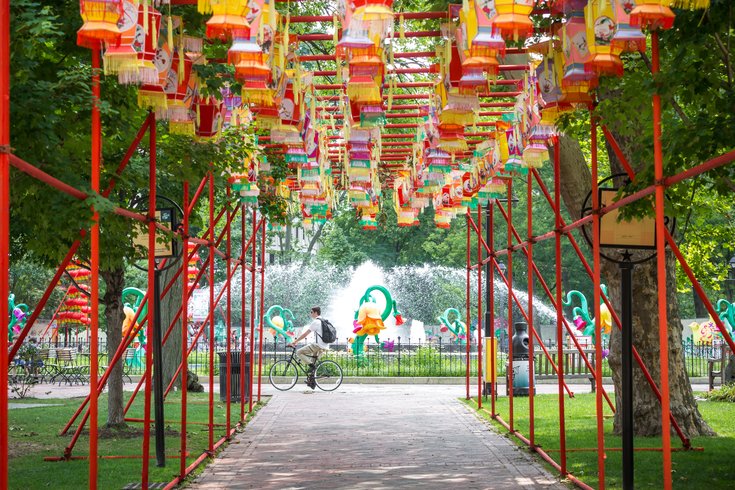 Thom Carroll/PhillyVoice
Thom Carroll/PhillyVoice
A cyclist rides past the Franklin Square fountain shortly after the conclusion of the Chinese Lantern Festival in June 2017.
Franklin Square might have more visibility than any of William Penn's original squares.
Thousands of motorists pass by Franklin Square each day as they enter or exit the Benjamin Franklin Bridge. But only a small percentage of them have ever spent any time in the park, which has long been hampered by the traffic barriers surrounding it.
Its location in Center City's northeast quadrant has heavily impacted its history, from its slow development to its days as a homeless haven.
While the areas surrounding Franklin Square, originally known as Northeast Square, have changed a great deal over the years, the park itself has seen the least change of any of Penn's squares.
Due to its marshy land, Franklin Square was slow to develop.
But in 1741 – six decades after the city's founding – the square gained a development that, in time, became controversial. And it's one that continues to impact development today.
Thomas Penn, the son of Philadelphia's founder, agreed to lease a portion of Franklin Square as a burial ground to the First German Reformed Church. The initial price? Fifty pounds sterling and an annual land tax of five shillings.
The first recorded burial in Franklin Square came in 1748, when 9-year-old Catherina Barbara was placed to rest on Jan. 11, according to an archaeological study completed in 2005. But the oldest known gravestone in the cemetery, marking the grave of Elizabeth Messenger, dates to Dec. 14, 1742.
The church's cemetery at Franklin Square gradually expanded over the decades to include much of the square's eastern portion.
At varying points, both the public and city government objected to the use of Franklin Square as a private burial grounds, noting William Penn had reserved it for public use.
The first major legal battle came in 1797, when the city ruled the lease was illegal and sued the church to recover the burial grounds. Eventually, the city dropped the lawsuit in exchange for a fenced graveyard and possession of the rest of the square.
Workers putting in a sewer line at Franklin Square in 1915 discovered a number of gravestones. The First German Reformed Church used a portion of the square as a cemetery from 1741 to 1836.
But the issue flared up again in the 1820s, when the city sought to transform Franklin Square into a park.
In 1821, the city terminated all lease negotiations and ordered the church to vacate Franklin Square. Four years later, the church offered to vacate for $50,000, a proposition the city opposed.
Litigation ascended to the Pennsylvania Supreme Court. In 1836, the court determined the church had no right to the land, ruling Thomas Penn's grant and subsequent leases were illegal.
The city proceeded to turn Franklin Square into a park, ordering the church remove the cemetery fence, but providing time for the church to transfer buried remains.
The church removed few, if any, remains from Franklin Square, according to the archeological study. Instead, the gravestones were laid flat upon the graves and covered with several feet of soil.
Human remains were uncovered at various times throughout the 20th century.
Several graves were disturbed when the city installed a new sewer line through Franklin Square in 1915. Additional human remains were uncovered during excavations for the nearby Benjamin Franklin Plaza in the 1920s.
Another sewer excavation, in 1976, yielded two gravestones, two skulls and other bones.
A plaque, dedicated in 1978, recognizes the numerous graves that remain buried beneath Franklin Square, including five of the church's early ministers.
The view of Franklin Square and the Benjamin Franklin Bridge from the Metro Club Condominiums, Wed. June 28, 2017.
The First German Reformed Church was not the only entity to lease or occupy Franklin Square during the 17th and early 18th centuries.
Attorney Ralph Assheton was the first to lease Franklin Square. Beginning in 1721, he rented the square for 21 years, possibly using it to graze livestock.
During the American Revolution, a brick gunpowder magazine was built on the square's northwest corner. In 1790, it was later relocated to the less populated 22nd and Walnut streets, because it was deemed a safety hazard.
In the early 19th century, auctioneer John M. Irwin held horse and cattle auctions on a portion of the square, as he also did at Washington Square.
And during the War of 1812, Franklin Square served as a military drilling ground.
But by 1837, Franklin Square was on its way to becoming a park.
The city installed a fountain of “grand dimensions” in Franklin Square in 1838. It remains the centerpeice of the square.
As part of its plans to convert Franklin Square into a park, the city government passed a resolution calling for a fountain of "grand dimensions" to be placed within it. It was to spray 40 jets of water into a marble basin, surrounded by an iron fence.
That fountain – installed in 1838 – remains the centerpiece of Franklin Square. It is one of the oldest surviving fountains in the country.
The fountain ceased operating in the 1970s, having fallen into disrepair. But when the nonprofit Historic Philadelphia revamped Franklin Square in 2006, it sunk considerable funding into its repair.
The fountain's stonework and iron fence – both part of the original construction – were preserved. And after being shuttered for three decades, the fountain now boasts a 15-foot stream.
Like the fountain, Franklin Square has seen minimal developmental changes since the city converted it into a park in 1837, installing pathways, planting trees and erecting a perimeter fence.
The next changes came in 1883, when electric lights replaced Franklin Square's gas lamps. The perimeter fence was torn down and replaced with low stone coping. Flagstone paving was added.
The fountain at the center of Franklin Square is believed to be one of the oldest fountains in the United States. It was installed in 1838.
More significant changes were considered in the early 20th century.
The winning design of a 1924 architectural competition to redesign Franklin Square included a Beaux-Arts plan featuring a statue of Benjamin Franklin amidst a semicircle of marble columns.
Six years later, French architect Jacques Greber proposed the square be remade into a circle, just as Logan Square was converted into a traffic circle during the construction of the Benjamin Franklin Parkway.
But neither proposal came to fruition.
Instead, the city opted to widen Race and Vine streets, taking 14 feet off the north and south sides of Franklin Square to accommodate increased motor vehicle traffic caused by the newly-completed Benjamin Franklin Bridge.
Another 21 feet was chopped from its north and south borders in 1954, again to accommodate street widening projects.
Additionally, the construction of a subway station and two tunnels beneath Franklin Square caused half of its trees to be excavated in the 1930s.
The Franklin Square subway station has seen little use over the years – it only was been operational 10 intermittent years since its construction in 1936. But PATCO, which maintains the station, is considering reopening the station.
Though the square itself has changed little, the areas surrounding Franklin Square have changed greatly, heavily contributing to its isolated vibe.
Isamu Noguchi's 'Bolt of Lightning' sculpture stands directly across from Franklin Square, at the base of the Benjamin Franklin Bridge.
Franklin Square was known as Northeast Square until 1825, when it was renamed after inventor Benjamin Franklin.
Nothing within the square pays direct tribute to Philadelphia's most famous resident. But across the street – at the entrance of the Benjamin Franklin Bridge – sits a sculpture paying tribute to Franklin's kite and key experiment.
Dubbed "A Bolt of Lightning," the 102-foot, stainless steel sculpture was designed by world renowned sculptor Isamu Noguchi in 1933 – more than 50 years before it was installed.
Noguchi, who designed numerous abstract sculptures, including the "Red Cube" in New York City, designed the metal work for a 1934 art competition in Philadelphia.
His design was not selected to be built, so Noguchi shelved the project for decades.
It was revived in 1979, when the Philadelphia Museum of Art included a model of the sculpture in a retrospective show of Noguchi's work.
Upon seeing the model, The Fairmount Park Art Association commissioned Noguchi $500,000 to construct the sculpture. George D. Widener's estate kicked in another $350,000. It was installed in 1984.
Noguchi, who died in 1988, designed the sculpture after returning to the United States following a two-year tour of Japan and China and another two years working for sculptor Brancusi in Paris.
"After coming back to America, I felt – patriotic is not the word – but it was a feeling of belonging here," Noguchi told The New York Times. "I'd also worked with Brancusi, in the thick of abstraction, and had become interested in sculpture becoming more real. I felt that art had to occupy itself with other than mere abstractions."
The sculpture, once described as "a crumpled, bent-can of a sculpture," is not nearly as revered as Benjamin Franklin.
A man drinks from a water fountain at Franklin Square, Nov. 12, 1914.
Franklin Square sat amidst a residential neighborhood in the mid-19th century. Women carrying parasols were known to stroll through the park during the week, with their husbands joining them on weekends.
Many of the neighborhoods businessmen lived in well-kept homes near the square.
But Philadelphia's wealthy began moving westward, first toward Rittenhouse Square, and later to the Main Line. And by the late 19th century, Franklin Square became surrounded by the city's Tenderloin district, an area populated by pool halls, saloons, brothels and gambling hotspots.
As the business types fled the neighborhood, it was replaced by working class residents who took advantage of its cheap rent, growing amusements and proximity to the city's labor industry.
Vaudeville acts, dime museums, shooting galleries and palm readers thrived. Opium and other drugs were easy to find.
But changing attitudes toward alcohol and other vices sent the Tenderloin district into decline as the United State entered World War I. And the construction of the Benjamin Franklin Bridge, coupled with increased automobile traffic, left Franklin Square isolated.
In its place emerged Skid Row, a series of dingy rooming houses, cheap restaurants, missions and businesses that catered to the homeless population and other poor city residents.
On any given day, hundreds of homeless people congregated in Franklin Square, passing the time by watching the cars traverse the Ben Franklin bridge.
"Finding a place to pass the time became a challenge," said sociologist Steve Metraux, who examined the history of Skid Row for Hidden City Philadelphia. "They'd go to Franklin Square because they could hang out there. Nobody was going to bother them. It was free."
The fountain at the center of Franklin Square, shown here in 1915, has served as the park's centerpeice since it was installed in 1838.
But homelessness looked different in the early 20th century than it does today.
The city's homeless population mostly was herded into one location, where an array of businesses offered cheap food, shelter and clothing, Metraux said. These businesses served the role that many nonprofits and government agencies now serve.
"The public accommodations – you wouldn't get that back then," said Metraux, who also has conducted research for the U.S. Department of Veterans Affairs' National Center for Homelessness. "It was all absorbed by the private market. It wasn't necessarily better, it was just different."
And only about 5 percent of the Skid Row population failed to find housing on any given night.
"You couldn't sleep in the park," Metraux said. "If you slept in the park, you could pretty much count on being arrested for vagrancy."
Most took advantage of the rooming houses, which offered residents a small, dirty space for the night. Others took shelter in seedy hotels, which offered rooms for as low as 40 cents per night, or in the Christian mission houses that lined Vine Street.
Alcohol abuse ran rampant. The Skid Row population was known to drink canned heat, rubbing alcohol and bay rum. They would spike drinks with the alcohol found in Sterno, a jelly-like heating substance that contained methanol and ethanol.
One nearby cigar store owner, Max Feinberg, was once convicted of 17 counts of involuntary manslaughter after 31 people died of methanol poisoning, allegedly from a new type of Sterno bought at his store.
In Franklin Square, any man deemed too drunk to care for himself was taken to a tool yard surrounded by an eight-foot tall, chain link fence. When it reached capacity, park rangers would call police.
Anyone who could climb over the fence was allowed to leave.
"Anybody can make that fence, we figure he's sober enough," Fairmount Park police Officer Morris Cohen told the Philadelphia Bulletin in 1971.
Franklin Square, shown here in 1910, bordered the city's Tenderloin district in the early 20th Century. The popular district was filled with pool halls, vaudeville theaters, two dime museums and brothels, among other entertainment options.
Not everyone who hung out in Franklin Square was drunk. One man would visit the square several times a day to feed nuts to the squirrels, occasionally taking sick and injured rodents home with him for rehab.
"Some of them I'd recognize if you took them to the North Pole," he told the Bulletin.
Perhaps surprisingly, sociologist Jane Jacobs deemed Franklin Square a successful park, arguing that the Skid Row population that congregates there gives it a purpose that many urban parks lack.
Most parks require a diverse group of users to keep them flowing with activity, Jacobs wrote in her 1961 book, "The Death and Life of Great American Cities." The one exception – Skid Row parks, even if the public finds them distasteful.
"In Franklin Square, if the weather permits, a day-long outdoor reception holds sway. The benches at the center of the reception are filled, with a voluble standing overflow milling about. Conversational groups continually form and dissolve into one another. The guests behave respectfully to one another and are courteous to interlopers too. Almost imperceptibly, like the hand of a clock, this raggle-taggle reception creeps around the circular pool at the center of the square. And indeed, it is the hand of a clock, for it is following the sun, staying in the warmth. When the sun goes down the clock stops; the reception is over until tomorrow."
The Skid Row population soared in the 1930s, but World War II absorbed a lot of it, Metraux said. The urban renewal projects that followed closed many of the businesses that catered to the people on Skid Row.
The Skid Row population dropped a bit in the 1950s, from 3,000 in 1952 to 2,857 in 1960. But by 1969 it had fallen to 800 and by 1975 it had dwindled to a mere 300 people.
Franklin Square became a little-used park isolated by heavy traffic, the Benjamin Franklin Bridge and, eventually, the Vine Street Expressway.
"The bottom line is there's nothing there for the park," Metraux said. "It was really that way for a while."
A family plays a round of miniature golf at Franklin Square, Thursday, June 22, 2017.
The city sought to revive Franklin Square in the early 2000s by contracting out its maintenance to Historic Philadelphia, a nonprofit that also oversees the Besty Ross House and storytelling benches within the city's historic district.
"People of a certain generation remember it as Skid Row," said Amy Needle, chief executive officer of Historic Philadelphia. "I've heard lots of different terms describing it. I think it was just a very unpleasant place to be. People who grew up at that time didn't go over to the square. It was just some place you avoided."
Transforming Franklin Square brought its own set of challenges. Not only did it hold a seedy reputation, but it is surrounded by traffic and set away from the happenings of Old City.
Simply renovating the park wouldn't bring people to it, Needle said. Franklin Square needed an attraction.
The solution was what visitors see today – a family-friendly tourist attraction that retains a semblance of the park's past.
The refurbished, historic fountain sits at the center of Franklin Square as it has for more than 175 years. Canopy trees adorn the park, which now boasts paved walkways and throwback light fixtures.
Those renovations were paired with the addition of a carousel, miniature golf course and a hamburger stand. Additionally, Historic Philadelphia holds various free programs, such as summer movie nights.
More than 1 million people visit the park each year, Needle said.
"The great thing about Franklin Square is that it is both a residential place and a tourist place," Needle said.
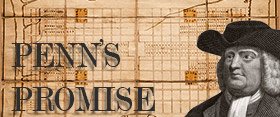
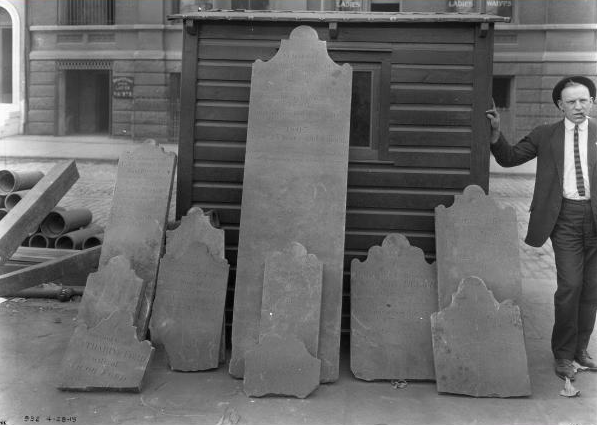 N.M. Rolston/PhillyHistory.org
N.M. Rolston/PhillyHistory.org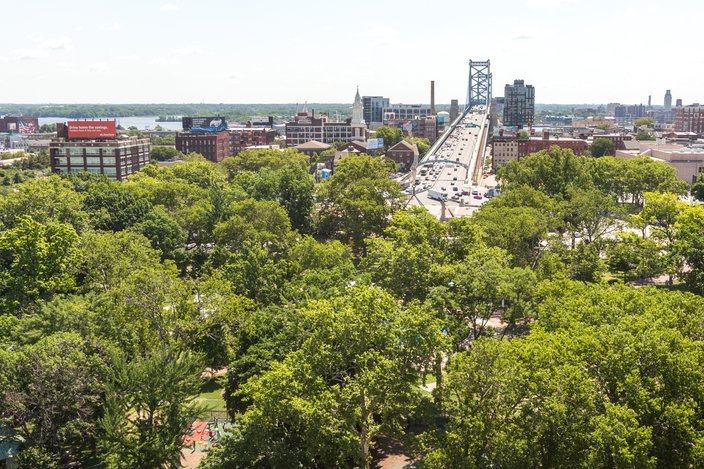 Thom Carroll/PhillyVoice
Thom Carroll/PhillyVoice John T. Bowen/Historical Society of Pennsylvania
John T. Bowen/Historical Society of Pennsylvania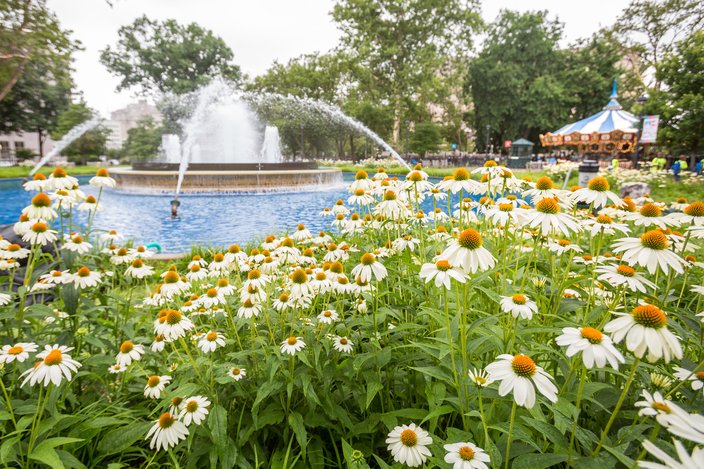 Thom Carroll/PhillyVoice
Thom Carroll/PhillyVoice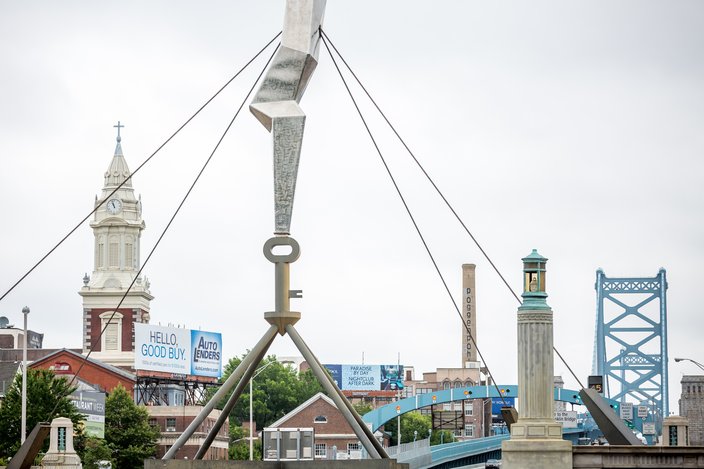 Thom Carroll/PhillyVoice
Thom Carroll/PhillyVoice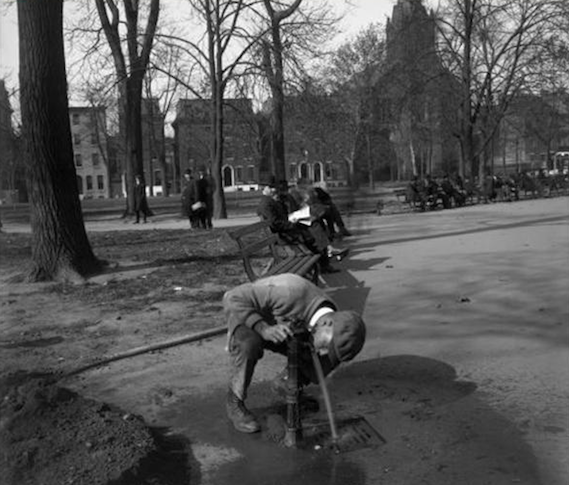 Source/PhillyHistory.org
Source/PhillyHistory.org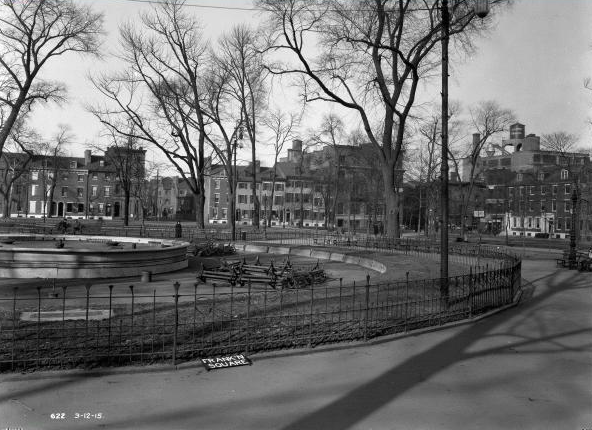 N.M. Rolston/PhillyHistory.Org
N.M. Rolston/PhillyHistory.Org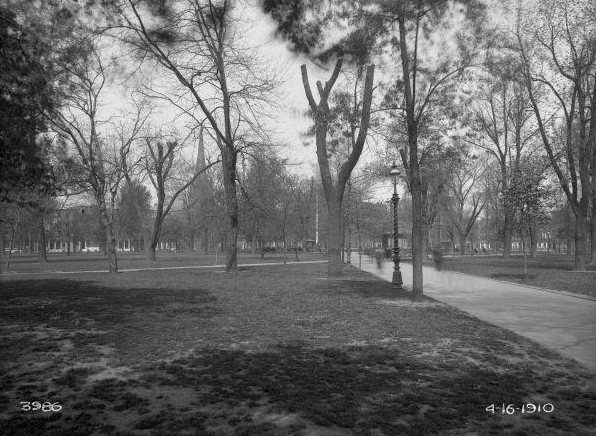 Source/PhillyHistory.org
Source/PhillyHistory.org Thom Carroll/PhillyVoice
Thom Carroll/PhillyVoice